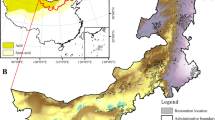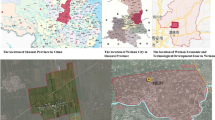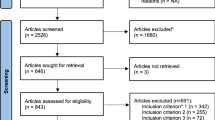Abstract
Natural landscapes consist of the natural substances, environment, and phenomena, all of which provide many benefits to people, including a sense of place, sightseeing, relaxing, and recuperating. However, the economic value of natural landscapes has only been recognized in recent decades, and the resulting large-scale decline and degradation of ecosystems now severely threatens the sustainable provision of their services to society. There is an emerging consensus that natural capital should be incorporated into the current socioeconomic accounting system. Many studies valuated natural resources at local and regional scales, but there are very few empirical studies at a national level. To provide a benchmark for natural landscape management on a national scale, we use the travel cost method (TCM) and the contingent valuation method (CVM) to determine the economic value and the spatial distribution of natural landscapes across China. Our results show that the total economic value of China′s natural landscape was 9.75 × 1011 U.S. dollars (USD) in 2012. Of this value, the highest proportion was in the eastern and southwestern regions of China, which accounts for 23.7% and 18.3%, respectively. The provinces of Guangdong, Sichuan, Yunnan, Inner Mongolia, and Heilongjiang were the top five in terms of the largest number of natural landscapes and largest economic values. Together, these five provinces accounted for 32.9% of the total number of natural landscapes and 29.4% of the total economic value in 2012. We believe this study will increase awareness of the value of natural landscapes, and more importantly provide a scientific basis for resolving conflicts between development and resource conservation.
Similar content being viewed by others
References
Bateman I J, Brainard J S, Lovett A A et al., 1999. The impact of measurement assumptions upon individual travel cost estimates of consumer surplus: a GIS analysis. Regional Environmental Change, 1(1): 24–30. doi: 10.1007/s10113 0050005
Bateman I J, Carson R T, Day B et al., 2002. Economic Valuation with Stated Preference Techniques: A Manual. Cheltenham: Edward Elgar Publishing Ltd.
Bergstrom J C, Stoll J R, Titre J P et al., 1990. Economic value of wetlands-based recreation. Ecological Economics, 2(2): 129–147. doi: 10.1016/0921-8009(90)90004-E
Bin O, Landry C E, Ellis C L et al., 2005. Some consumer surplus estimates for North Carolina beaches. Marine Resource Economics, 20(2): 145–161.
Blakemore F, Williams A, 2008. British tourists’ valuation of a Turkish Beach using contingent valuation and travel cost methods. Journal of Coastal Research, 246: 1469–1480. doi: 10.2112/06-0813.1
Boxall P C, Adamowicz W L, Swait J et al., 1996. A comparison of stated preference methods for environmental valuation. Ecological Economics, 18(3): 243–253. doi: 10.1016/0921-8009(96)00039-0
Brown W G, Nawas F, 1973. Impact of aggregation on the estimation of outdoor recreation demand functions. American Journal of Agricultural Economics, 55(2): 246–249. doi: 10.2307/1238448
Carson R T, Mitchell R C, 1993. The value of clean water: the public’s willingness to pay for boatable, fishable, and swimmable quality water. Water Resources Research, 29: 2445–2454. doi: 10.1029/93WR00495
Caulkins P P, Bishop R C, Bouwes N W, 1986. The travel cost model for lake recreation: a comparison of two methods for incorporating site quality and substitution effects. American Journal of Agricultural Economics, 68(2): 291–297. doi: 10.2307/1241430
Chen Fu, Zhang Jie, 2001. Analysis on capialization accounting of travel value—a case study of Jiuzhaigou scenic spot. Journal of Nanjing University, 37(3): 296–303. (in Chinese)
Chen Yingfa, Chen angming, 1994. Two popular methods for forest tourism valuation abroad. Journal of Beijing Forest University, 16(3): 97–105. (in Chinese)
Chen Yingfa, 1996. Cost method: a practical valuation method to evaluate forest recreational value. Ecological Economy, (3): 27–31. (in Chinese)
Clawson M, Kentsch J L, 1966. Economics of Outdoor Recreation. Maryland: The Johns Hopkins Press.
Daily G C, 1997. Nature’s Services: Societal Dependence on Natural Ecosystems. Washington: Island Press.
Freeman A M, 2003. The Measurements of Environmental and Resource Values: Theory and Methods. Washington: RFF Press.
Garrod G, Willis K G, 1999. Economic Valuation of the Environment: Methods and Case Studies. Cheltenham: Edward Elgar Pub, England.
Greenley D A, Walsh R G, Young R A, 1981. Option value: empirical evidence from a case study of recreation and water quality. The Quarterly Journal of Economics, 96(4): 657–673. doi: 10.2307/1880746
Hanley N, Barbier E, 2009. Pricing Nature: Cost-benefit Analysis and Environmental Policy. Cheltenham: Edward Elgar Pub.
He Shuping, Liu Jing, 2008. The consumer surplus in western economics. Journal of Harbin University of Commerce, 99(2): 111–114. (in Chinese)
Jim C, Chen W Y, 2006. Recreation–amenity use and contingent valuation of urban greenspaces in Guangzhou, China. Landscape and Urban Planning, 75: 81–96. doi: 10.1016/j. landurbplan.2004.08.008
Kim S G, Bowker J M, Cho S H et al., 2010. Estimating travel cost model: spatial approach. Agricultural and Applied Economics Association, 1–17.
Lee C K, Han S Y, 2002. Estimating the use and preservation values of national parks tourism resources using a contingent valuation method. Tourism Management, 23: 531–540. doi: 10.1016/S0261-5177(02)00010-9
Li Na, Pan Wen, 2010. Using travel cost interval analysis to evaluate the recreational benefits of Shennongjia Nature Reserve. Ecological Economy, (1): 35–41. (in Chinese)
Li Xueyan, 2010. Evaluation of recreation value of Canus scenes’ tourism resources. Forest Resources Management, 4: 88–92. (in Chinese)
Liu Xianghua, 2007. The theoretic improvement and its application of CVM in the valuation if Qixinghe wetland services. Ecological Environment, (2): 317–320. (in Chinese)
Loomis J, Tadjion O, Watson P et al., 2008. A hybrid individual: zonal travel cost model for estimating the consumer surplus of golfing in Colorado. journal of Sports Economics, 10(2): 155–167. doi: 10.1177/1527002508320136
Ma Jianying, Sun Xuegang, 2001. Review of studies on forest tourism resource evaluation. Journal of Gansu Agricultural University, 36(4): 357–363. (in Chinese)
Ma Zhong, 2006. Introduction of Environmental and Natural Resource Economics. Beijing: Higher Education Press. (in Chinese)
Mendes I, 2002. Travel and On Site Recreation Time: An Empirical Approach to Value the Recreation Benefits of Peneda-Gerês National Park. Lisbon: IATUR’s 2002 Conference.
Preez M D, Hosking S, 2010. Estimating the recreational value of freshwater inflows into the Klein and Kwelera estuaries: an application of the zonal travel cost method. Water SA, 36(5): 553–561.
Walsh R G, Loomis J B, Gillman R A, 1984. Valuing option, existence, and bequest demands for wilderness. Land Economics, 60(1): 14–29. doi: 10.2307/3146089
Wang Huijuan, 2011. A brief talk of natural landscape aesthetics of Fuping Tianshengqiao scenic spot in Hebei Province. Tourism Overview, (7): 106–108. (in Chinese)
Willis K, Benson J, 1989. Recreational values of forests. Forestry, 62(2): 93–110. doi: 10.1093/forestry/62.2.93-a
Willis K G, Garrod G, 1991. An individual travel: cost method of evaluating forest recreation. Journal of Agricultural Economics, 42(1): 33–42. doi: 10.1111/j.1477-9552.1991.tb00 330.x
Xie Zhengxian, Ma Zhong, 2006. Evaluating recreation value of Mount. Huang using travel cost method. Resources Science, 28(3): 128–136. (in Chinese)
Xue Dayuan, Bao Haosheng, Li Wenhua, 1999. A study on tourism value of biodiversity in Changbaishan mountain biosphere reserve in northeast China. Journal of Natural Resources, 14(2): 140–145. (in Chinese)
Yang W, Chang J, Xu B et al., 2008. Ecosystem service value assessment for constructed wetlands: a case study in Hangzhou, China. Ecological Economics, 68: 116–125. doi: 10.1016/j.ecolecon.2008.02.008
Yu Yang, Wang Erda, Zhao Ling et al., 2009. Documentation study of economic valuation on recreational tourism resources. East China Economic Management, 23(9): 140–145. (in Chinese)
Zhang Jinquan, 2007. The study of non use value evaluation of Huangshan mountain based on CVM. Shanghai: Shanghai Normal University. (in Chinese)
Zhang Xiaoli, Ma Li, Lu Xiaozhen et al., 2011. Research on the evaluation method of recreation value: a case study of Fengyangshan National Nature Reserve. China Population, Resources and Environment, 21(3): 213–216. (in Chinese)
Author information
Authors and Affiliations
Corresponding author
Additional information
Foundation item: Under the auspices of National Science and Technology Support Program (No. 2011BAC09B08-02)
Rights and permissions
About this article
Cite this article
Xiao, Y., Cheng, C., Yang, W. et al. Evaluating value of natural landscapes in China. Chin. Geogr. Sci. 26, 244–255 (2016). https://doi.org/10.1007/s11769-015-0795-5
Received:
Accepted:
Published:
Issue Date:
DOI: https://doi.org/10.1007/s11769-015-0795-5




